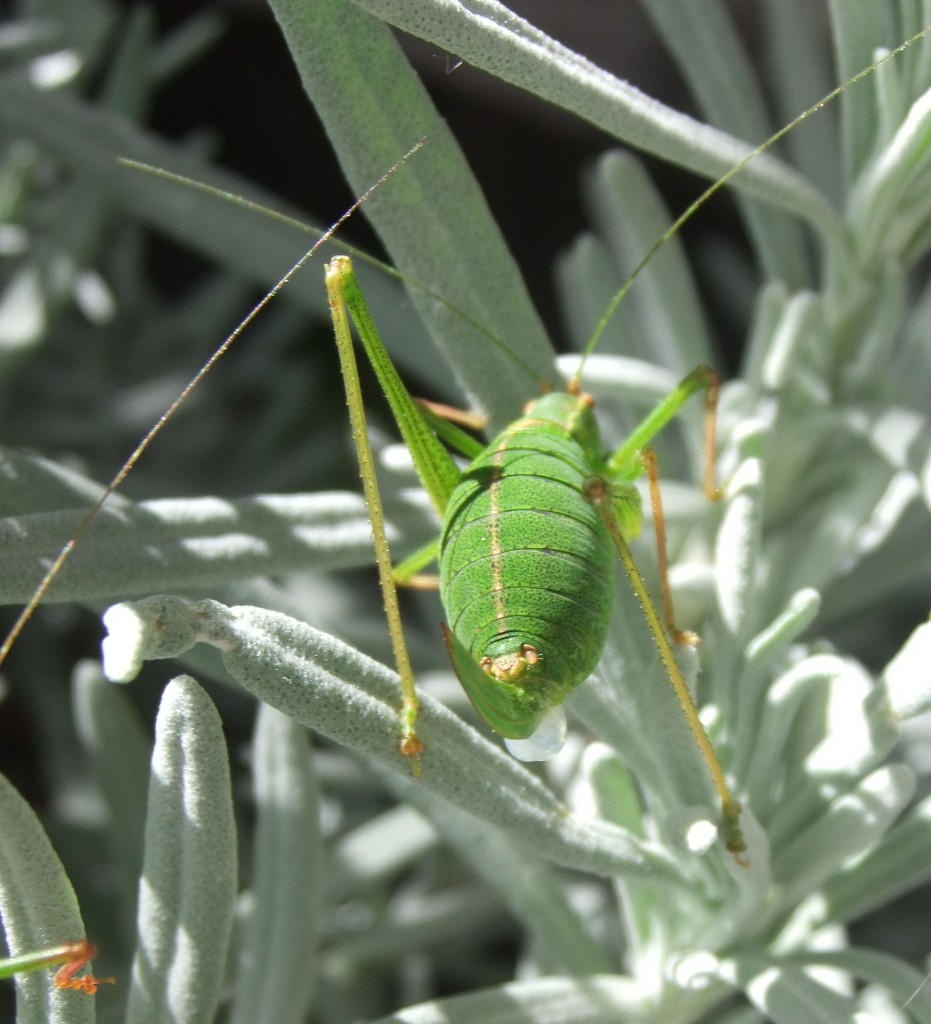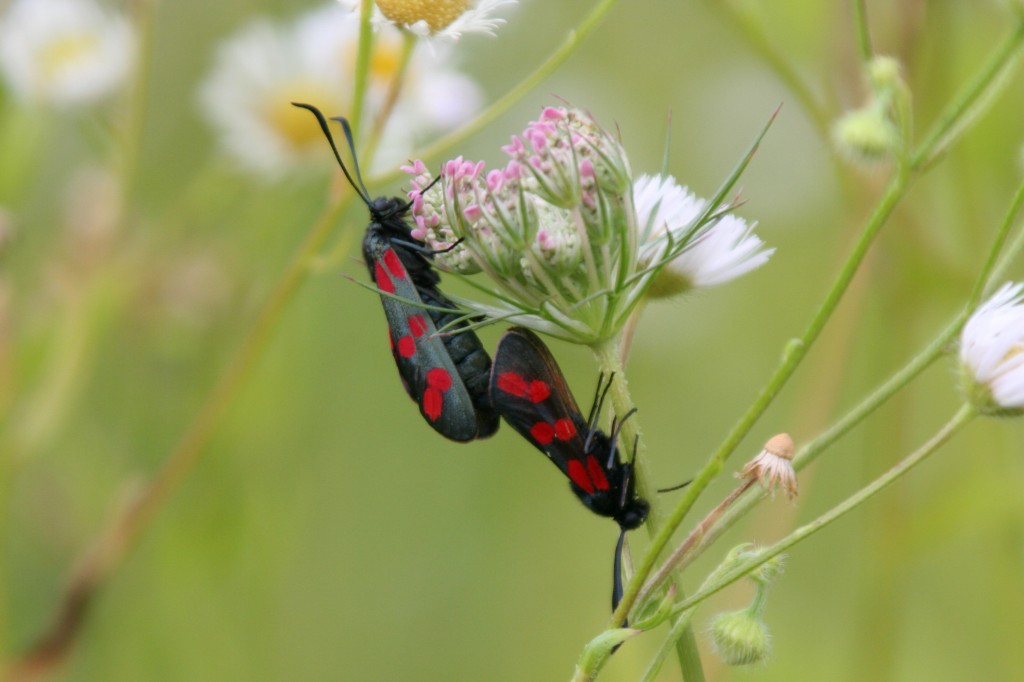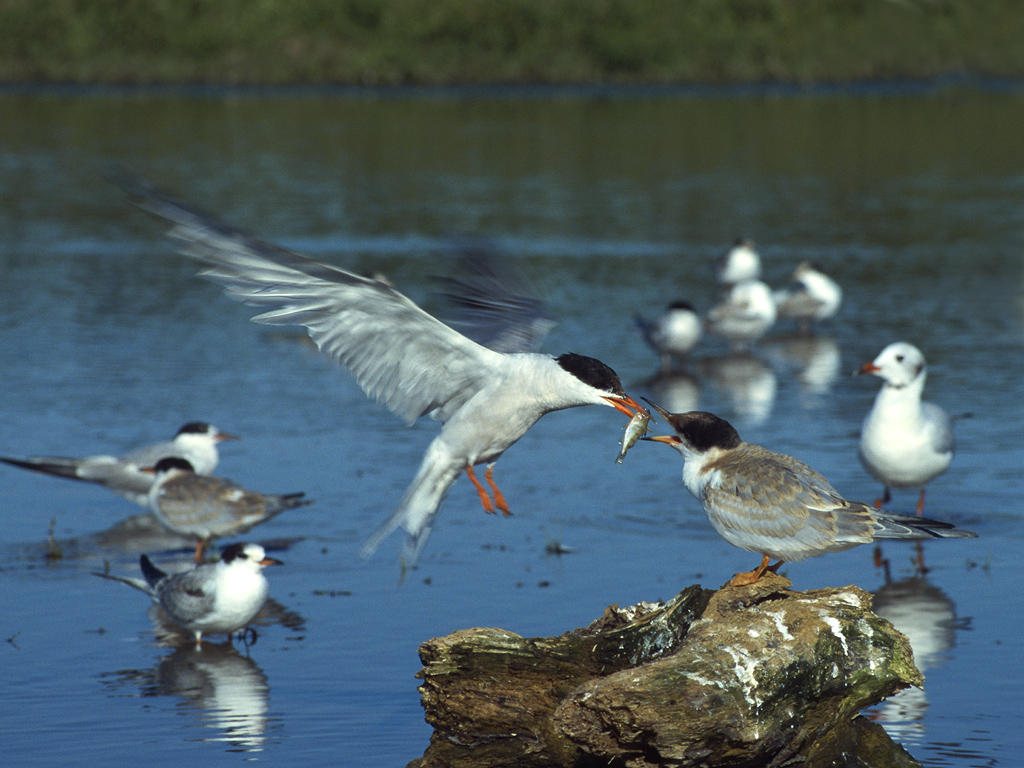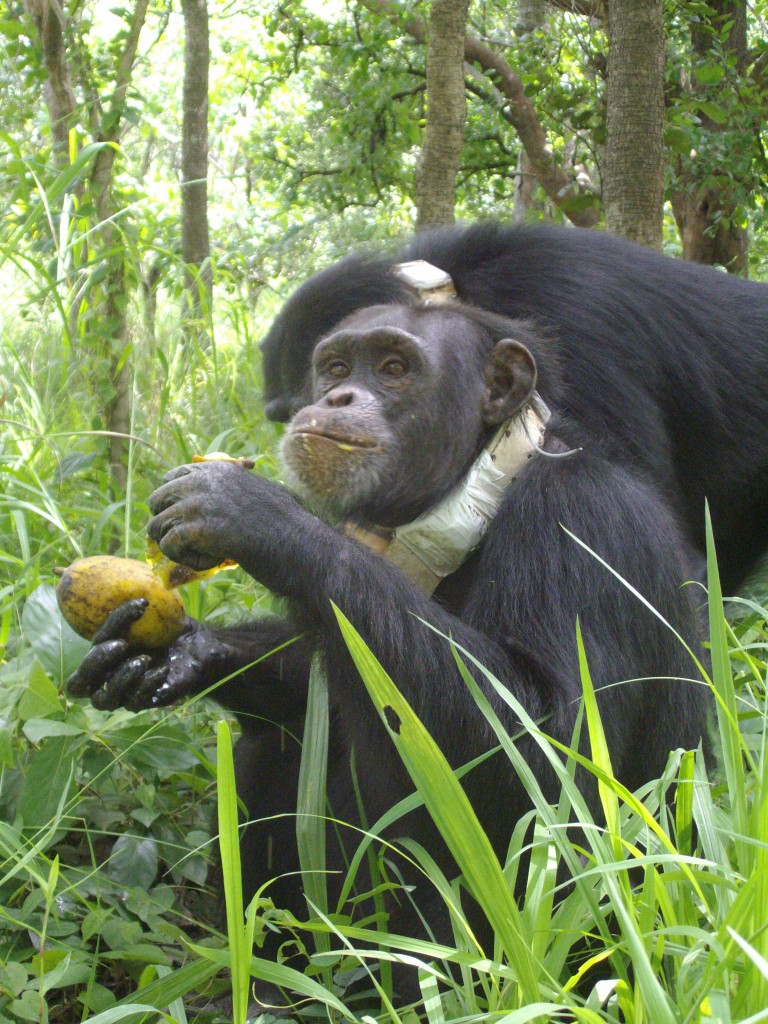by Kristen Minogue
Most animals are quite pragmatic in their gift-giving. When attracting mates, elaborate dance routines and ostentatious coloring certainly help. But when offering presents, males tend to give their significant others something they can actually use (unless they are sleazeballs—but more on that later).
Of course, what a female bush cricket finds enticing wouldn’t necessarily go over well for a chimpanzee, or an Arctic tern. What follows is a glimpse of romance in the rest of the animal kingdom. Below are four gifts animals can use to attract or care for their mates, and while they are usually thoughtful in context, we don’t recommend trying them at home.
Laced with Cyanide
The six-spot burnet moth injects more than sperm when he mates with a female. He also gives her a heavy dose of cyanide compounds, valuable chemical weapons she can use to defend herself or pass on to her larvae. This is not to imply that female moths are helpless at the beginning. Research has shown that virgin females and virgin males have roughly the same amounts of cyanogenic compounds in their systems before mating, and sometimes the females have more. But after mating, the females almost always have higher levels of cyanide. In an act of self-sacrifice, the male moths make themselves the weaker sex to empower the mothers of their children.
Dinner for One
Offering food is a classic strategy in the animal kingdom, and birds have made it their go-to method for mating. In some birds the ritual contains traces of desperation. Common terns will circle a brooding colony displaying a fish in their mouths, waiting for a female to show interest. Male kingfishers must partially swallow a fish, so they can present it face-first to the object of their affection.
Other birds, such as robins and cardinals, have been seen engaging in something called “courtship feeding,” though the term is a bit of a misnomer. These birds feed their partners after courtship is over. For them, feeding is more an act of devotion and sustenance. While the female cares for the nest, the male brings her food in the form of seeds, worms or other treats—sometimes fresh, and sometimes regurgitated. In Blue Tits, males are responsible for almost half the females’ food supply before she lays her eggs.
Chimpanzees Play “The Long Game”
Not all gifts immediately lead to sex. Many females, both human and nonhuman, would find such an ulterior motive repulsive. This makes our cousins, the chimpanzees, look almost chivalrous. Chimpanzees have been spotted sharing food with females outside their families with no subsequent mating—at least, not right away. Researchers in the Ivory Coast discovered that if a male shared meat with a female even just once, the odds of mating with her months later increased. Of course, as with most animals, chimpanzee courtship is a game of ladies’ choice. But getting on her good side early doesn’t seem to hurt.
Spermatophores: Some Strings Attached

Speckled bush cricket with spermatophore (white sphere below the abdomen) after mating (Orangeaurochs)
Mixing food and sex (literally) is a popular tactic in the insect and arachnid world. Animals in these groups often create spermatophores, gelatinous blobs that contain a packet of sperm and varying amounts of food. Most look like milky-white spheres, though firefly spermatophores can resemble strands of rotini pasta.
Decorated crickets (Gryllodes sigillatus) are the ultimate charlatans in this mating game. Typically, a male cricket places a spermatophore on the female’s body. The longer she spends eating it, the more time his sperm have to enter her body as they mate. However, this species’ spermatophores are like chocolate: full of sweet-smelling chemicals (for the crickets) and near-zero nutritional value. If that weren’t bad enough, they’re also spiked with antiaphrodisiacs so the female won’t want to mate with any other males in the near future. Females infected with the toxins tend to die sooner, making it a potentially lethal gift.
Fortunately, female decorated crickets seem to have evolved a resistance to the chemicals. Whether the males will develop something more potent remains to be seen. But for at least one species, courtship has become less about romance and more about an evolutionary arms race.
Photo from the Chimpanzee Conservation Centre used via Creative Commons License here.




